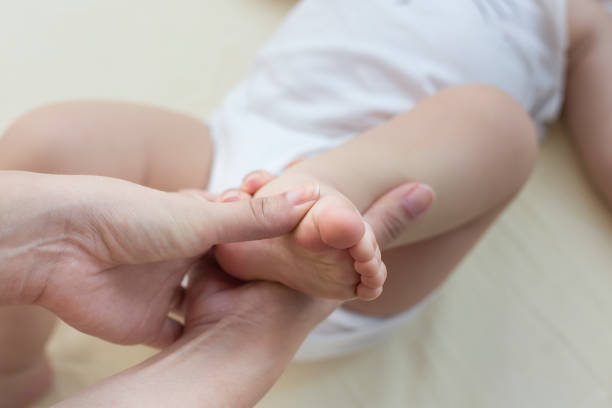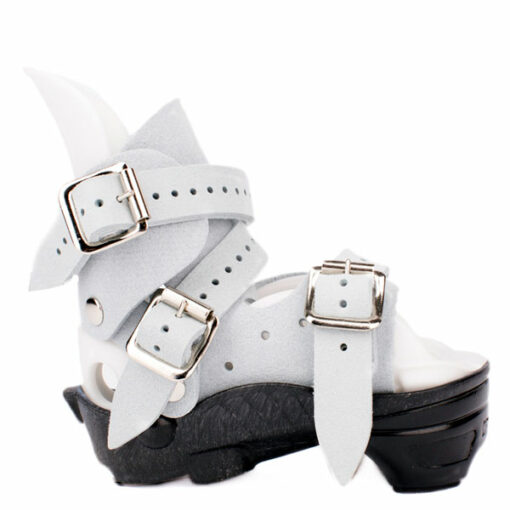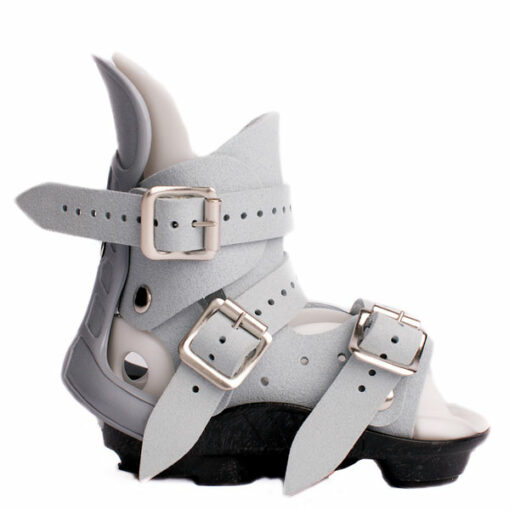News
4 Symptoms of Clubfeet in a Baby
Clubfeet are twice as common in boys as girls. The deviation can differ per baby. This blog post discusses the 4 most common symptoms of clubfoot in a baby.
What is clubfoot in a baby?
Clubfoot is a congenital abnormality of the foot’s position. In the Netherlands, more than 200 babies are born with clubfeet every year. This abnormality can be treated well with special orthopedic aids. Over time, the foot can return to a normal position.
4 symptoms of clubfeet in a baby
The cause of clubfoot is that certain tendons and/or muscles in the lower leg are too long or too short. As a result, the foot and the bones assume a different position. Clubfeet are often discovered in a baby during the 20-week ultrasound. The 4 most common variants of clubfeet in babies are discussed below.

1. A hollow foot–clubfoot
One of the variants of clubfoot in a baby can be a hollow foot. The hollow foot can be recognized by the shape that the foot takes. The name clubfoot can give a different picture than one would expect from a clubfoot. In the English language, this is also called a ‘clubfoot,’ about the shape of the head of a golf club.
2. The foot is tilted down – Equines
It is also possible that the clubfoot is tilted down. The baby’s foot is then pointing downwards in a kind of splint position. When the clubfoot is tilted down, this is usually called the ‘equinus’ or pointed position of the foot.

3. The clubfoot and heel face inward
A baby’s clubfoot can take on different shapes. There is also a chance that the clubfoot and heel are facing inwards. This ensures the different positions of the foot.
4. The forefoot faces inwards and backward
This clubfoot shape is also known as a comma. In this case, the baby’s forefoot has an inward-facing position. And there is talk of a split position. The different forms of clubfeet are based on an increasingly severe variant.

Can a clubfoot in a baby be treated?
Yes, clubfoot can be treated. A baby does not have enough strength to bring their foot back into the correct position. In all four cases mentioned above, orthopedic aids are required to change the position of the foot.
Advantages of Ponseti products with a clubfoot
Ponseti-clubfoot has properties that characterize the product. These advantages make the product a unique baby clubfoot aid that sets it apart from similar models. The benefits of Ponseti can be found below.
Models for training purposes
We offer in its range different models for baby’s clubfeet, suitable for training.

Extensive range
Ponseti-clubfoot has a pervasive range of possible instruments that can be used to recover clubfeet in babies.

Offers accessories
Ponseti-clubfoot offers various accessories to promote clubfoot recovery.

Expert advice
Not sure which product to use? Our specialists are always available for personal advice.



 Includes all the basic features of the Standard Mitchell Ponseti® AFO
Includes all the basic features of the Standard Mitchell Ponseti® AFO
